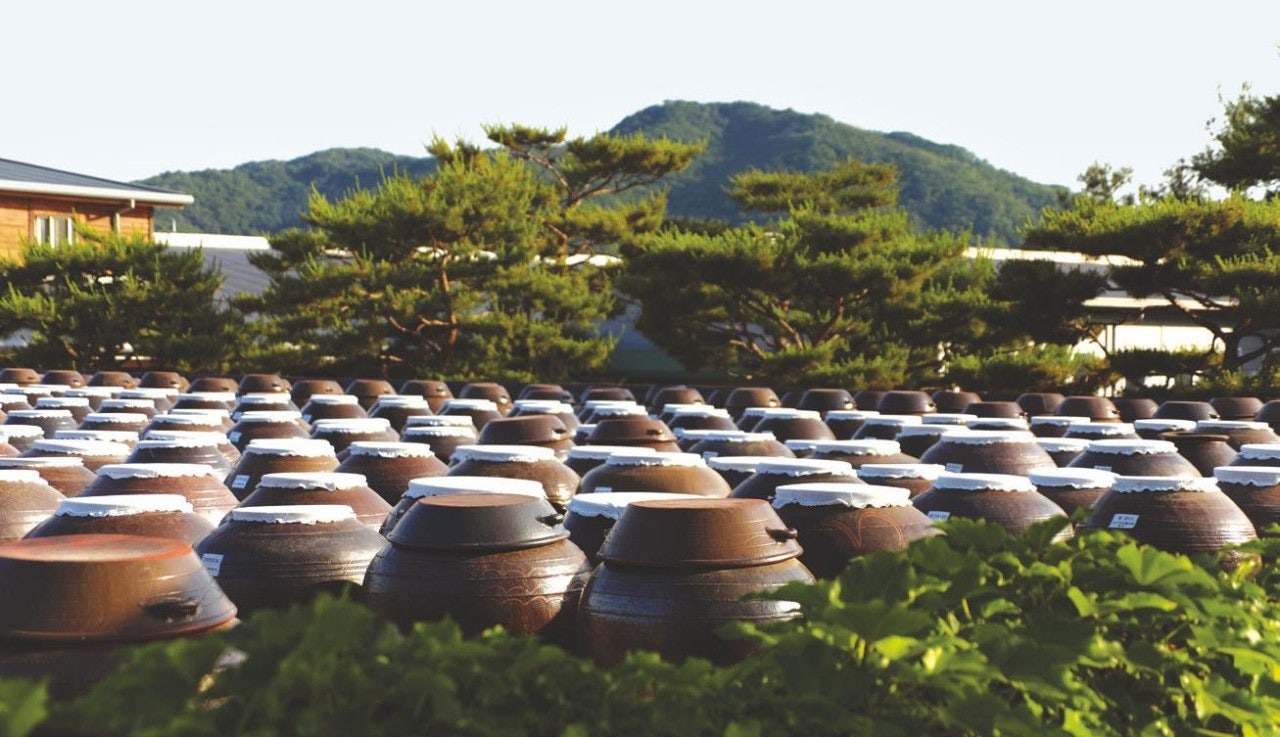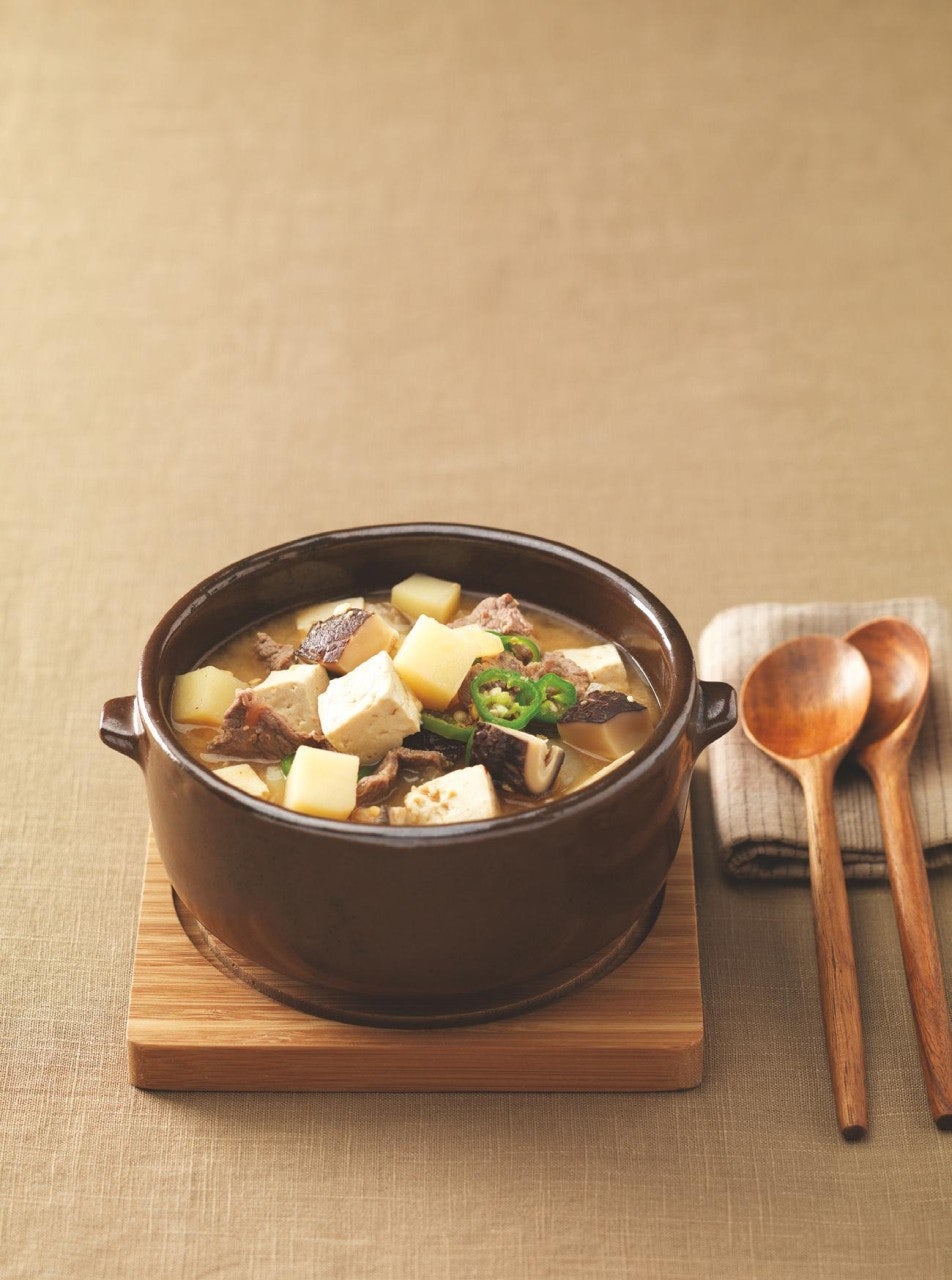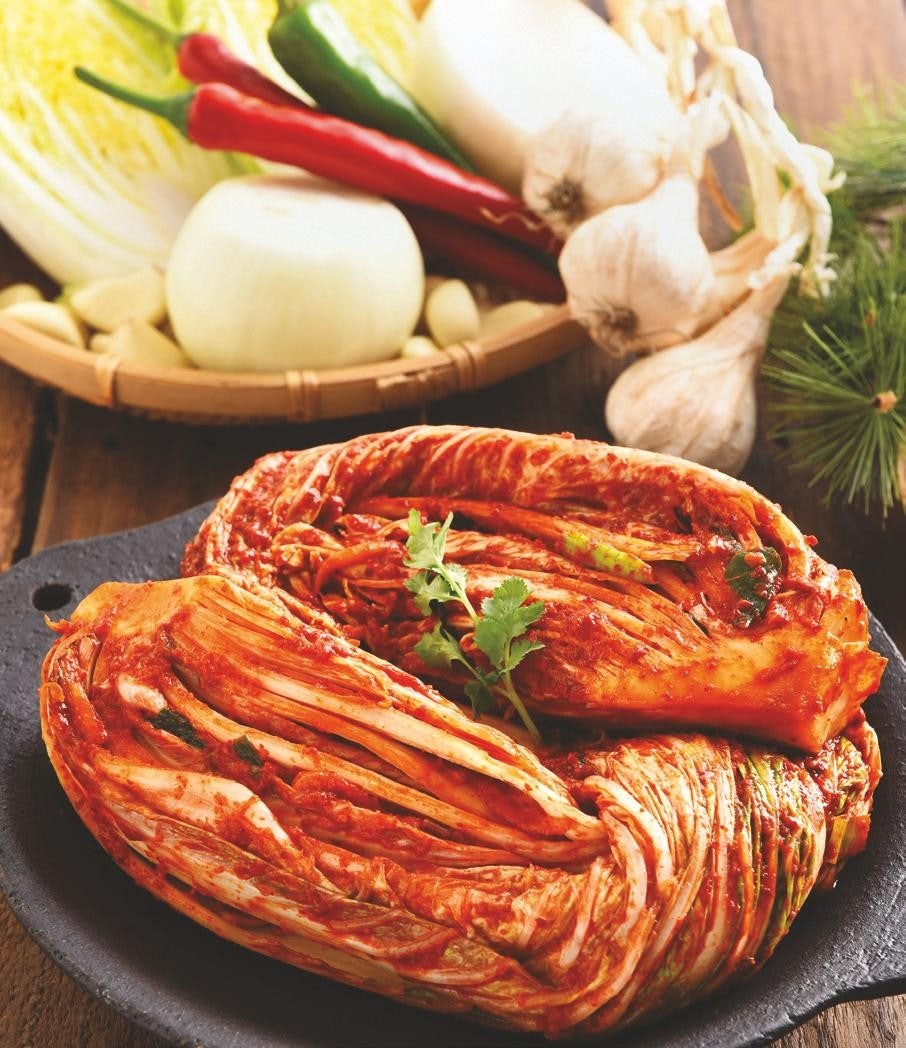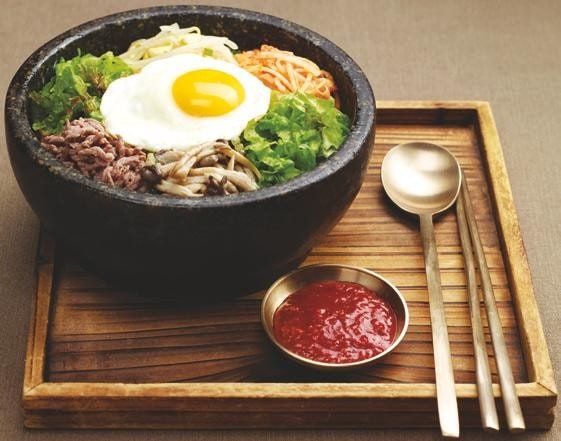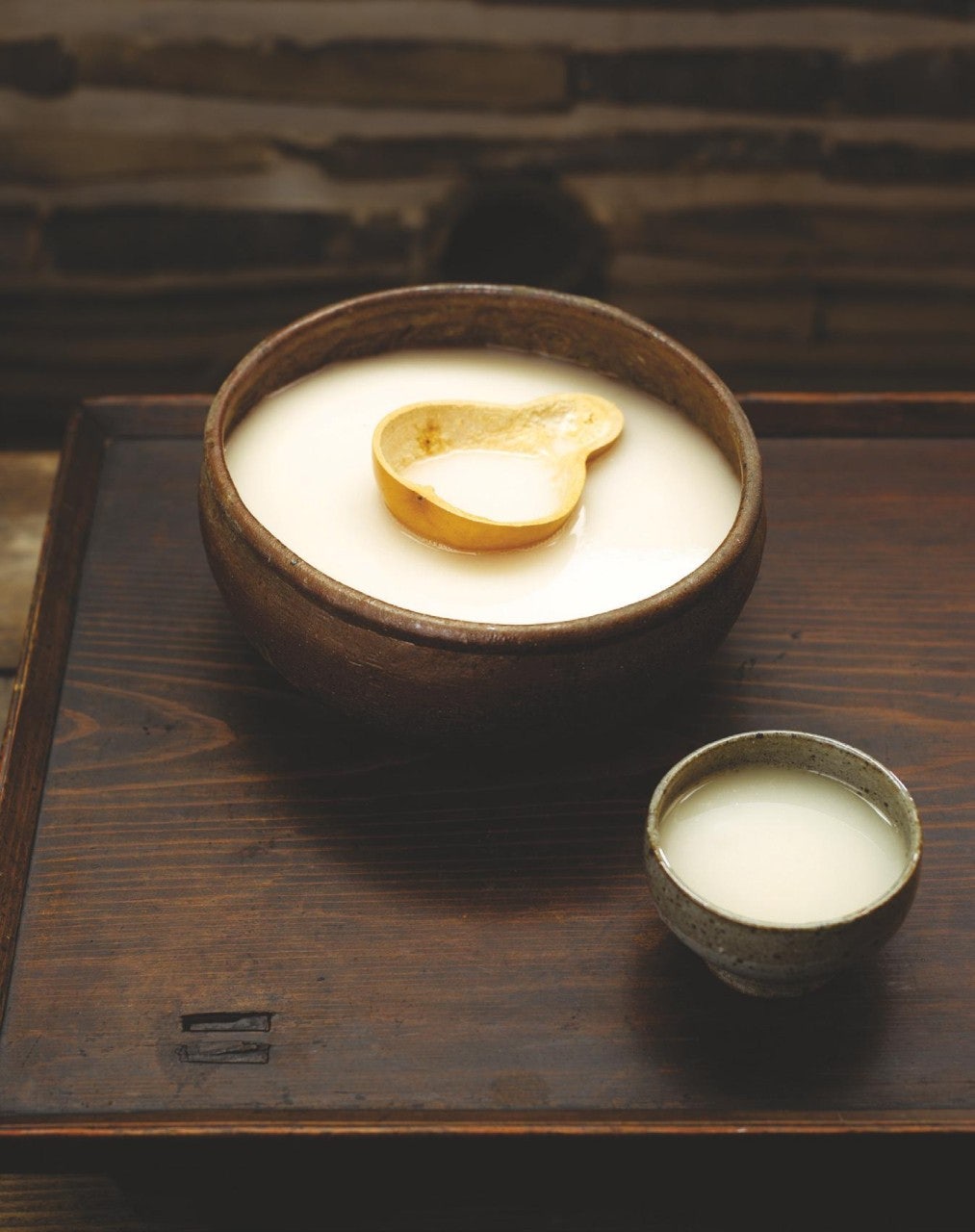K-LIFE
Since their settlement in prehistoric times on the land now known as the Korean Peninsula, the Korean people have developed a wealth of unique cultural traditions related to the way they dress, eat, and behave at home. These traditions reflect the natural environment of their homeland, a terrain predominately covered by hills and mountains, bound by the sea on three sides and marked by four distinct seasons.
Korean Food 한식
Since ancient times, the Korean people have maintained a belief that food and medicine have the same origin and hence perform the same function, following the adage that ‘food is the best medicine’. They believe that health and illness alike come from the food they consume and how they eat it, and this idea has played a crucial role in the development of traditional Korean medicine whose basic principle is that we should use medicine only after food has failed.
한국인은 몸을 치료하는 것과 먹는 것은 근본이 같다는 뜻의 ‘의식동원(醫食同源)’이라는 관념을 중시해왔다. 이는 건강이란 식사에서 비롯된다는 사고방식으로, 음식으로 우선 병을 다스리고 난 후에 약으로 치료한다는 개념이다.
Fermentation of Food 발효문화
One of the key words to understanding traditional Korean food is fermentation, a metabolic process that helps food to ‘mature’ so that it has improved taste and nutritional properties and can be stored for a longer period. The Korean foods that best represent the tradition of fermentation developed in Korea include doenjang (soybean paste), ganjang (soy sauce), gochujang (chili paste) and jeotgal (fermented fish sauce), whose fermentation can take anywhere from several months to several years. The degree of fermentation is a key factor in the taste and flavor of food cooked at home and in restaurants.
한국 요리의 가장 중요한 특징은 저장해두고 오래 먹기 위해서 음식을 발효시킨다는 것이다. 대표적인 발효음식으로 김치와 음식 맛을 좌우하는 된장, 간장, 고추장, 젓갈이 있는데, 젓갈은 짧게는 몇 개월, 길게는 몇 년 동안 발효시켜서 만든다.
Doenjang (Soybean Paste) and Ganjang (Soy Sauce) 된장, 간장
Two of the most important items of traditional fermented food in Korea are doenjang and ganjang. To make them, it is necessary to soak soybeans in water and boil them until fully cooked. Then, they must be pounded and ormed into brick-shaped lumps, and left to dry and ferment. Then, they are placed in salted water in a large pot along with dried red chili and heated charcoal, which help remove impurities and odor during the fermentation process. The beans thus prepared are then left for about two to three months until they become fully fermented. This product should then be divided into two, solids and liquid, of which the former needs to be brewed for over five more months and the latter for over three months to develop a full flavor and taste. Just like wine, soy sauce tends to have a richer flavor and taste when brewed for a longer period.
된장과 간장은 ‘메주’를 기본 재료로 해서 만든다. 메주는 콩을 물에 불려 삶아서 짓이긴 후 벽돌 크기로 뭉쳐서 단단하게 만든다. 메주가 잘 발효되어 누룩곰팡이가 피면 소금물과 함께 항아리에 담는다. 그 위에 불순물과 냄새를 없애기 위해 붉은 고추와 뜨거운 숯을 넣고 2~3개월 숙성시킨 후, 덩어리(된장)와 액체(간장)를 분리한다. 이 중에서 간장은 다시 3개월 이상 숙성시켜야 그윽하고 향기로운 맛이 살아난다. 포도주와 마찬가지로 간장은 오래될수록 향미가 좋다. 된장 또한 5개월 이상 더 숙성시킨 뒤 먹는다.
Gochujang (Chili Paste) 고추장
Gochujang (chili paste) is a traditional Korean condiment made by fermenting a mixture of soybean malt, salt, and chili pepper powder with a blend of powdered rice, barley, flour, and malted barley. Gochujang has long been one of the most important traditional condiments among Korean people, whose palates have evolved towards a preference for hot and spicy foods since they were introduced to chili several hundred years ago. Chili and gochujang are now often regarded as a symbol of the vibrant, energetic disposition of Korean people.
고추장은 녹말(찹쌀가루, 멥쌀가루, 보릿가루, 밀가루)에 엿기름 등을 넣고 당화시킨 다음 고추장용으로 만든 메주, 소금, 고춧가루를 넣어 항아리에서 숙성시킨 것이다. 고추장은 매운맛을 즐기는 한국인에게 없어서는 안 될 음식으로 숙성시킬수록 맛이 좋다. 고추와 고추장으로 상징되는 매운맛은 한국 특유의 야무진 기질을 상징하기도 한다.
Jeotgal (Salted Seafood) 젓갈
An almost indispensable ingredient for kimchi and a very popular condiment used to enhance the taste of food, jeotgal (salted seafood) is made by mixing one of a variety of seafood (such as anchovy, shrimp, oyster, or clam) with salt, or with other condiments in addition to salt, and fermenting it in a cool
place. They say that a longer period of fermentation makes it tastier. The tradition of making fermented fish sauce yielded several special delicacies
including sikhae, which is made by fermenting fish mixed with rice and condiments.
김치를 담글 때나 음식의 맛을 낼 때 조미료로 사용하는 젓갈은 제철에 잡은 멸치, 새우, 굴, 조개 등을 소금이나 양념과 섞어 서늘한 곳에서 숙성시킨 것이며, 오래 숙성시킬수록 그윽한 맛이 난다. 특히 생선에 양념과 밥을 함께 넣어 발효시킨 ‘식해’라는 젓갈은 맛이 좋아 인기가 높다.
Kimchi 김치
Now beginning to gain a worldwide reputation as a representative food of Korea, kimchi has been praised for its anti-carcinogenic properties and nutritional value, as well as numerous variations that create excitingly diverse flavors and tastes. The most common type of kimchi is made by mixing salted white cabbage with kimchi paste made of chili powder, garlic, spring onion, Korean radish ginger, fish sauce and other ingredients like fresh seafood. Kimchi can be eaten fresh but is normally consumed after fermenting it for several days. Kimchi is normally eaten after fermenting it for several days although some prefer called mugeunji, (ripe kimchi) which is fully fermented for over one year.The ingredients of kimchi vary according to each region and its special local produce and traditions. Seoul, for instance, is famous for gungjung kimchi (royal kimchi), bossam kimchi (wrapped kimchi), chonggak kimchi(whole radish kimchi), and kkakdugi (cubed radish kimchi), while Jeolla-do Province is well known for its godeulppaegi kimchi (Korean lettuce kimchi) and gat kimchi (leaf mustard kimchi).
세계인의 음식이 된 김치는 항암작용이 뛰어난 건강식품이며 종류가 매우 많다. 그중 대표적인 배추김치는 소금물에 절여 깨끗이 씻은 배추 잎 사이사이에 무, 파, 마늘, 생강, 고추 등과 젓갈을 한데 버무린 배춧속을 넣어 만드는데, 지역에 따라 해산물을 넣기도 한다.김치는 담가서 바로 먹기도 하지만 대개 며칠간 숙성시킨 후에 먹는다. 푹 익은 김치를 좋아하는 사람들은 ‘묵은지’라고 부르는, 1년 혹은 2년간 숙성시킨 김치를 즐긴다. 김치의 재료는 지역이나 지역 특산물에 따라 약간씩 다르다. 서울은 궁중김치, 보쌈김치, 총각김치, 깍두기가 유명하고, 전라도는 고들빼기김치와 갓김치가 유명하다.
In 2001, the Codex Alimentarius Commission listed Korean kimchi in the internationally recognized standards, and in 2012 officially recognized the term “kimchi cabbage,” which had previously been referred to as “Chinese cabbage” until then. In 2006, a US health magazine, Health Magazine, selected kimchi as one of the five healthiest foods on earth
2001년 국제연합 국제식품규격위원회는 일본 기무치가 아닌 한국 김치를 국제기준으로 정했다. 또한 2012년 국제식품규격위원회는 그간 ‘Chinese Cabbage’로 분류됐던 한국산 배추를 ‘김치 캐비지’(Kimchi Cabbage)로 등재했다.한편, 2003년 급성호흡기질환인 사스가 지구촌에 널리 퍼졌을 때 김치를 먹는 한국인은 안전하다고 보도되어 김치의 효능이 세계인의 주목을 받았다. 2006년 미국 건강 잡지 <헬스 매거진>은 김치를 건강에 좋은 세계 5대 음식의 하나로 선정했다.2013년에는 김장 문화가 유네스코 세계무형문화유산에 등재되었다. 유네스코 무형유산위원회는 김장 문화를 선정한 이유를 ‘하나는 이웃과 담가 나눠 먹는 공동체 정신이고, 다른 하나는 자연 재료를 창의적으로 이용하는 식습관’이라고 밝혔다.
Bibimbap 비빔밥
Bibimbap (literally “mixed rice”) is essentially a dish of cooked rice served after mixing it with an assortment of fresh and seasoned vegetables, fried
egg, minced beef and other ingredients before cooking. The dish is closely related with Jeonju, a UNESCO-designated “City of Gastronomy,” where food-related festivals, including the Bibimbap Festival, are held every autumn, attracting gastronomes from across Korea and beyond.
비빔밥은 밥에 계절 특유의 갖가지 채소, 달걀, 소고기 등을 넣고 비벼서 먹는 음식으로, 뜨거운 돌솥에 넣어 비비기도 한다. 전통적인 맛의 도시이자, 유네스코가 인정한 음식창의 도시인 전주는 비빔밥으로 특히 유명하다. 비빔밥 축제를 비롯한 각종 요리행사가 열리는 매년 가을에는 국내외 미식가들로 북적인다.
Bibimbap has recently begun to attract worldwide attention for its nutritional balance, which is said to help keep those who eat it free from geriatric diseases, and is now generally cited as one of the three most representative dishes of Korean cuisine along with kimchi and bulgogi.
비빔밥은 최근 성인병 예방에 좋다고 알려지면서 세계적인 인기 음식으로 부상하고 있으며, 김치, 불고기와 함께 한국을 상징하는 3대 대표 음식으로 손꼽힌다. 비빔밥은 항공사 기내식으로도 인기를 끌고 있으며, 점점 더 간편하게 먹을 수 있도록 개발되고 있다.
Bulgogi 불고기
Bulgogi, which literally means “fire meat,” refers to a traditional Korean dish made by grilling beef or (rarely) pork after shredding or slicing it and marinating it in sweet soy sauce mixed with a great variety of condiments. It is one of the rare meat dishes to have developed in Korea, where people were generally more accustomed to eating vegetable dishes, and has won many enthusiasts outside the country. Bulgogi has recently been adopted by fast-food restaurants in Korea, resulting in the emergence of bulgogi hamburgers and pizzas.
불고기는 고기를 간장, 설탕, 배즙 등을 섞어 만든 양념에 재어놓았다가 각종 채소를 곁들여 불판에 구워 먹는 음식이다. 고기 종류에 따라 소불고기, 돼지불고기 등이 있다. 불고기는 채식 위주의 한국 음식에서 드물게 보이는 육식 음식으로, 외국인의 입에도 맞아 인기가 좋다. 최근 햄버거나 피자에도 넣는 등 다양하게 활용되고 있다.
Tteok (Rice Cake) 떡
Tteok, or Korean rice cake, refers to a range of sticky cakes made by steaming powdered rice with other grains, usually beans, or by pounding boiled rice into different shapes and textures. While tteok was sometimes eaten as part of a meal, it was more often one of a variety of special foods served at special family or communal occasions such as birthday parties, wedding receptions, memorial services and traditional holidays. Rice is the main ingredient of tteok, but it is often mixed with other grains, fruits, nuts and herbs such as mugwort, red bean, jujube, soybean and chestnut.
찹쌀이나 멥쌀가루를 반죽하여 팥이나 콩 등과 함께 찌거나 익혀서 먹는 음식을 떡이라고 한다. 쌀은 쪄서 밥을 지어 주식으로 먹지만 경우에 따라서는 떡으로 만들어 먹기도 한다. 생일, 잔치, 제사 등 특별한 행사날이나 명절에 빠질 수 없는 음식이다. 주로 흰쌀가루에 쑥, 팥, 대추, 콩, 밤 등 각종 재료를 넣어 만든다.
Korean people in the past assigned various symbolic meanings to tteok and made and ate it according to those meanings. They made (and still make)
baekseolgi (white steamed rice cakes), for instance, on the first birthday of a baby as it symbolizes a long life, and they made patsirutteok (steamed
red bean and rice cake) whenever they started a business as its red color was believed to help repel evil forces. They celebrate New Year’s Day with tteokguk, consisting of a broth with rice flakes, and Chuseok (the 15th Day of the Eighth Lunar Month) with songpyeon, bite-sized half-moon shaped rice cakes stuffed with a honey, chestnut, soybean, or sesame mixture. There are many famous tteok houses in Nagwon-dong in downtown Seoul.
아기의 첫 생일에는 장수를 의미하는 백설기를, 사업을 시작할 때는 액운을 쫓아내는 의미로 붉은 팥시루떡을 만들어 먹는다. 명절인 설날에는 흰 가래떡을 얇게 썰어 넣은 떡국을, 추석에는 쌀 반죽을 얇게 편 후 그 안에 소(꿀, 밤, 콩, 깨 등)를 넣어 쪄낸 송편을 만들어 먹는다. 서울 낙원동은 떡집이 많기로 유명하다.
Juk (Porridge) 죽
Juk is a Korean-style porridge made of various grains that is usually served to children, the elderly, or people suffering from digestive problems. In recent years juk houses have begun to appear in many parts of Korea. They usually prepare the dish with a wide range of ingredients, mostly grains and vegetables, and it has also been developed into numerous varieties, some of which are now served at small specialty diners.
곡식에 물을 많이 넣고 오래 끓인 유동식 형태의 음식인 죽, 소화가 잘 안 되는 어린이나 노인 등을 위한 음식인 죽은 원래 치료 음식이었다. 최근에는 각종 곡물이나 채소로 만든 죽을 개발해 파는 죽 전문점이 많아졌고, 인스턴트식으로 여러 종류의 죽을 만들어 파는 기업도 늘고 있다.
Noodles 국수와 냉면
Korean people have developed a wide range of noodle dishes that are full of symbolic meanings. One such dish is janchi guksu (literally “banquet noodles”), which is served in a hot anchovy broth to the guests at a wedding reception (hence the name). This dish is so closely related with the idea of a happy marriage in Korea that a question such as “When can we eat noodles?” would readily be understood to mean “When do you plan to get married?” It is also eaten to celebrate birthdays because it symbolizes a long, healthy life. Korean people also have a long established tradition of eating naengmyeon (cold buckwheat noodles), served in either cold beef broth (Pyeongyang naengmyeon) or with a spicy chili sauce (Hamheung naengmyeon).
국수는 한국에서도 다양하게 발달했다. 특히 결혼식 때 ‘잔치국수’라고 하는 따뜻한 국물에 국수를 넣은 음식을 손님에게 대접하는 전통이 있다. 그래서 “언제 국수 먹느냐?”는 질문은 “언제 결혼하느냐?”라는 의미로 사용되기도 한다. 생일에 국수를 먹으면 오래 산다는 속설도 있다.메밀국수를 찬 고기 국물에 말아먹는 냉면도 유명하다. 냉면은 지역에 따라 매운 양념을 넣어 비비는 함흥냉면과 시원한 육수를 넣은 평양냉면으로 나뉜다.
Hanjeongsik (Korean Set Menu) 한정식
Hanjeongsik, otherwise known as the Korean set meal, originally consisted of cooked rice, soup, and anywhere from three to five, (largely vegetable,)
side dishes. As people are gradually becoming better off due to the thriving national economy, today’s set meal tends to be much more luxurious with
tens of new dishes, meat and fish included, although the three basic dishes, i.e. rice, soup, and kimchi, still remain. Two cities in the southwestern part of Korea, Jeonju and Gwangju, are particularly famous for this traditional Korean meal.
밥과 국에 채소 위주의 반찬 3~5개를 내는 정식을 일반적으로 한정식이라고 한다. 생활수준이 높아지면서 반찬 종류가 더욱 많아져서 요즘 한정식에는 수십 가지 반찬을 차리지만 어떤 한정식이라도 밥과 국, 김치는 기본으로 오른다. 재료가 풍부하고 인심이 좋은 전주, 광주 등 호남지역 한정식이 유명하다.
Alcoholic Beverages 술
A wide variety of alcoholic beverages have been developed across different parts of Korea to meet the needs of local communities during holidays, festivals, memorial rites and other commemorative occasions. Currently some 300 traditional beverages have survived, including Munbaeju (wild pear liquor) and Songjeolju (pine knot liquor) in Seoul; Sanseong Soju(distilled liquor) in Gwangju of Gyeonggi-do Province; Hongju (red liquor) and Leegangju (distilled liquor) in Jeolla-do Province; Sogokju (rice wine) in Hansan of Chungcheong-do Province; Insamju (ginseng liquor) in Geumsan;
Gyodong Beopju (rice liquor) and Andong Soju (distilled liquor) in Gyeongju of Gyeongsangbuk-do Province; and Okseonju (distilled liquor) in Hongcheon of Gangwon-do Province.
축제, 제사 등이 많은 한국에서 술은 지역마다 고유하게 발달했다. 고급 전통주로는 서울의 문배주와 송절주, 경기도 광주의 산성소주, 전라도의 홍주와 이강주, 충청도 한산의 소곡주와 금산의 인삼주, 경상북도 경주의 교동법주와 안동소주, 강원도 홍천의 옥선주 등이 유명하다. 이 밖에 지역과 가문에 따라 만드는 전통주가 300가지가 넘는다.
One of the most popular traditional alcoholic beverages across Korea today is makgeolli (rice wine), which is also known by other names such as nongju (farmer’s wine), takju (cloudy wine) and dongdongju (rice wine). It is made by a process in which steamed rice, barley or wheat is mixed with
malt and left to ferment, and has an alcohol content of 6-7%, making it a fairly mild drink. As the fermented liquor receives more recognition for its healthy aspects, it is gaining popularity among foreign tourists visiting Korea. Another hugely popular alcoholic beverage of Korea is soju which is made by adding water and flavoring to alcohol extracted from sweet potatoes and grains. With an alcohol content that varies but is significantly higher than makgeolli, it is much appreciated by ordinary citizens across Korea and is rapidly gaining enthusiasts outside Korea.
막걸리를 일반적으로 마시는데, 농민이 많이 마셨다 하여 ‘농주’, 색깔이 희고 탁하다 하여 ‘탁주’, 밥풀이 동동 떠 있다 하여 ‘동동주’라고 한다. 쌀, 보리, 밀 등을 쪄서 누룩으로 발효시킨 막걸리는 알코올 성분이 비교적 낮은 6~7도 수준이다. 건강에 좋은 발효 술로 인정받으면서 한국을 찾는 외국 관광객들에게도 인기를 끌고 있다. 한국인은 고구마와 곡물에서 추출한 알코올에 향료와 물을 섞어 만든 소주도 즐겨 마신다. 소주는 알코올 도수가 높은 반면 값이 저렴하여 서민의 술로 널리 애용되며 해외로도 수출된다.

